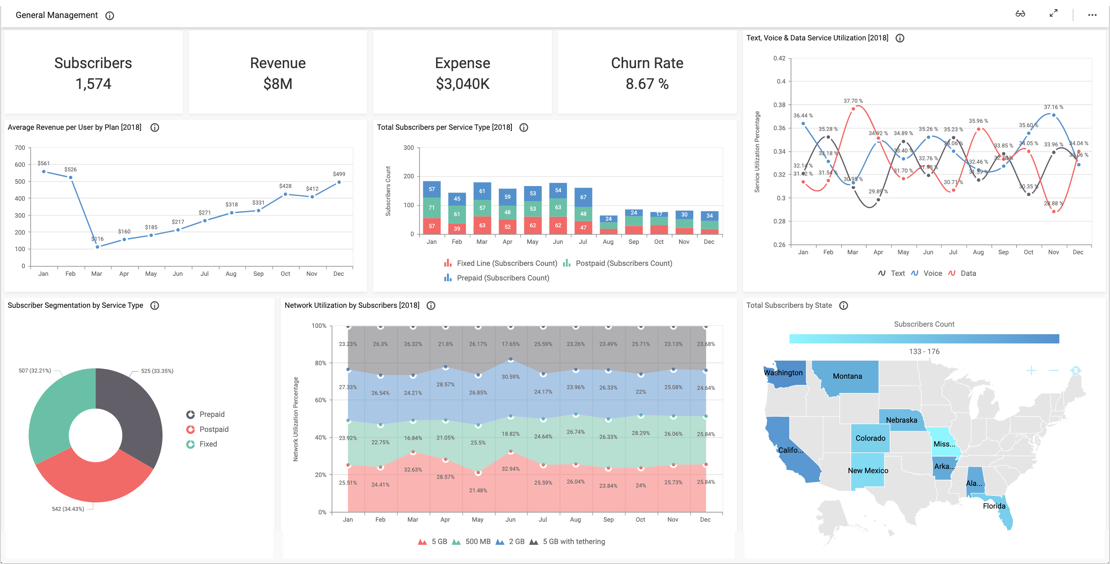- How many customer calls did the network drop?
- Are customers satisfied with their service and call quality?
- What are our key metrics, such as call setup time, delay, and bit rate?
Filter Data By Region
First, please take note of the “Region” filter at the upper left corner of the dashboard. With this filter, viewers can choose to see data for one particular service region or for all regions combined. To select a region, simply use the drop-down list box. Then, to clear the filter and view data for all regions, click the funnel-shaped icon that appears above the drop-down list box.
For example, let’s say I would like to view data for Durham. After selecting the Durham region, I can see that the network dropped 18 out of 47 total services. This amounts to 38% of calls. Then, if I clear the filter, I can see that in total, the network dropped 353 of 705 calls. Thus, Durham’s call success rate is better than the company’s overall rate. However, the numbers suggest that some aspects of the network could be improved.
Ensure Call Quality and Customer Satisfaction
Next, with the “Call Quality – Customer Satisfaction by Region” widget, I can view the number of customers who considered the company’s service to be bad, average, good, and excellent. In the Durham region, 35 customers rated the service “bad,” 77 rated it “average,” “47 rated it “good,” and 11 rated it “excellent.” Even though the dropped call rate may be higher than the company would like, it is useful to know that most customers consider the service to be average or better than average.
Finally, the rest of the dashboard’s widgets provide technical details of the network’s ability to process calls and send and receive data. This information is critical for a few reasons.
Firstly, it offers insight into where the company is meeting or exceeding industry averages and where they could improve. Secondly, with this data, viewers can quickly analyze the network’s efficiency and functionality. This can help the company determine whether any adjustments need to be made. Having these telecom KPIs available in one convenient location is an invaluable tool for engineers and decision makers who need to ensure that equipment is running efficiently and resources are allocated appropriately.




